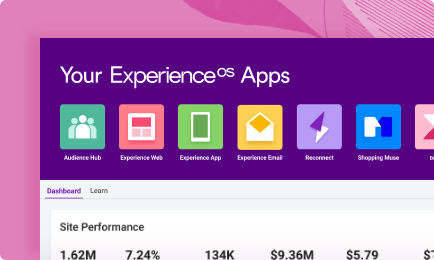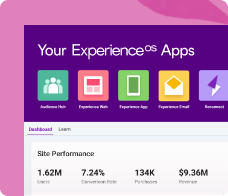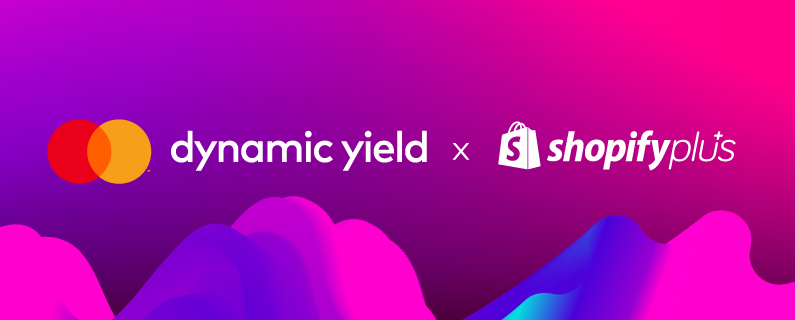Mastering Channel Prioritization: How to Optimize Re-Engagement with a Winning Strategy
Learn how Reconnect can help you capture your customers’ attention with personalization at every critical moment along with best practices to keep customers coming back.
In the world of customer engagement, triggered messages are key to fostering lasting connections with your audience. It’s the sweet spot where brands and customers intersect, all balancing on the consent of your audience. Take away this consent, and you lose the ability to communicate with customers about everything, from new item announcements and exclusive offers to highly-anticipated sales.
Communication helps us stay top-of-mind in a digital environment where customer attention is king, but communicating the right way can often be a delicate dance. Overwhelming your audience with a barrage of messages can swiftly backfire, harming your overall marketing efforts and preventing promising relationships with your customers from blossoming.
Learn how Reconnect can help you capture your customers’ attention with personalization at every critical moment.
The consequences of over-communication
Customers often opt into multiple channels throughout their relationship with a brand. Maybe they opted into SMS to unlock a discount, and subsequently signed up for emails to hear about the latest sales. While having multiple ways to reach customers is a good thing, excessive communication can overwhelm them and even lead to a brand’s doomsday scenario: the unsubscribe.
Customers inundated with marketing messages are prone to actions that obstruct future communication with the brand. These actions may include ignoring messages, disabling notifications, revoking push permissions, uninstalling the app, leaving negative reviews, or churning. In fact, 1 in 4 respondents switched brands or didn’t renew a subscription because they received too many emails or SMS messages. Furthermore, over-communicating leads 1 in 2 consumers to miss or ignore phone, email, and SMS communications, leading to decreased open rates. So, how do you make the most of the opportunity your customers have given you to connect with them without losing their trust or interest?
The importance of channel prioritization
One of the most effective ways to reduce over-communication is through channel prioritization. Channel prioritization is the strategic process of assigning different significance levels to various communication channels. This method involves analyzing and understanding recipient preferences, channel strengths, resource allocation, and engagement patterns to build a strategy that maps to the goals of your marketing campaign. When customers have opted into multiple channels, channel prioritization is essential to ensure they aren’t overwhelmed by too many messages.
The ultimate goal is to boost communication efficiency, elevate recipient engagement, and provide a personalized experience by leveraging the channels that resonate best in specific scenarios. In essence, channel prioritization empowers us to send messages where they matter most to customers. There are numerous ways to refine channel prioritization, and choosing the right strategy is just as important as prioritizing in the first place. Finding a personalization provider that offers pre-built strategies can help you launch your multi-channel campaigns quickly so your messages reach the right people at the right time, in the right way.
Choosing the right prioritization strategy
When beginning your channel prioritization journey, multiple dimensions must be considered, including cost, urgency, content capacity, and accessibility. Each theme plays an important role in deciding how best to prioritize within your campaign, and pre-built strategies can help you scale your prioritization efforts quickly and efficiently.
Cost
When integrating cost into your strategy, it’s important first to acknowledge that some channels are less expensive than others. When more than one messaging option is available, and when working against a tight marketing budget, it’s best to prioritize less expensive channels.
To apply this logic, let’s consider a price-drop campaign. Price-drop alerts are typically highly appealing but contain offers that aren’t relevant for very long. SMS and push notifications are immediate channels where messages pop up on the customer’s device; however, push notifications are cheaper. To accommodate for a lower budget, push should be prioritized over SMS.
However, when sending a message that typically has a high ROI, like back-in-stock notifications, you might prefer to prioritize a more costly channel that averages higher click-through rates.
Urgency
Urgency is another factor to consider when creating a campaign. Push notifications and SMS get instant reactions, whereas emails can get more delayed engagement.
Referring back to our price drop campaign, the timeframe included here is shorter than that of other types of campaigns. Because email is considered a slow channel, it would be advantageous to prioritize push or SMS to accommodate the limited relevancy period.
Content Capacity
Content Capacity varies across every channel, and refers to how much content can be included in a single message. Some campaigns require single product focus, with minimal content, and are ideal for “lean” channels like push notifications or SMS. Other campaigns require rich content, as email can offer.
For example, when creating a cart abandonment campaign, it’s preferable to send an email rather than a push notification or SMS message to re-engage a lost customer. Email is highly effective in this scenario because it enables you to remind your customer of the product abandoned in the cart, as well as offer replacements that might be a better fit.
Accessibility
Accessibility refers to the ease with which a customer can revisit a message once they receive it. For example, a push notification is a message that immediately pops up on the customer’s phone, but once they swipe away, that message is irretrievable. Email is a highly effective channel for rich content; however, the competition over customer attention is much more intense than SMS. When sending a message that you want your customer to revisit, it’s best to prioritize SMS first.
Combat over-messaging with Reconnect
To strike the right balance, brands should employ strategies that dictate which channels customers should receive communications on and when. It’s important to send contextually relevant messages, and finding a tool that optimizes and personalizes these communications with ready-made strategies can help maximize the impact across each channel.
The Reconnect app, part of our Engage capability, offers a sophisticated triggering engine that intelligently eliminates unnecessary noise by delivering messages at the right time. Harnessing the power of our A/B tests, you can experiment to uncover the most optimal channels and content for each customer. Dynamic Yield’s personalization capabilities are baked into Reconnect so you can activate customer engagement data and leverage deep learning algorithms that match the right products and content to different audiences based on consumer behavior, product affinities, and cross-device behavior. Crafting and delivering hyper-personal messages to each customer’s unique needs is key to developing a re-engagement program that actually re-engages customers.
Access to pre-built channel prioritization strategies within Reconnect enables you to avoid over-communication, drive conversions, and save time in your workflow. This priority logic incorporated into Reconnect instinctively understands how channels should be prioritized for every campaign, helping you to adapt the ideal multi-channel strategy for each unique use case.
Within Reconnect, you also have the ability to define your own custom strategy. This flexibility gives you the control and freedom to discover and build strategies tailored to your customers and unique business needs.
It’s time to add strategy to channel prioritization
Channel prioritization is crucial for effective customer communication. From ignoring messages to uninstalling apps and leaving negative reviews, the repercussions of over-communication are manifold. Pre-built strategies in Reconnect can help you master channel prioritization and strike the right balance between frequency and impact, leading to increased traffic, engagement, and revenue.















